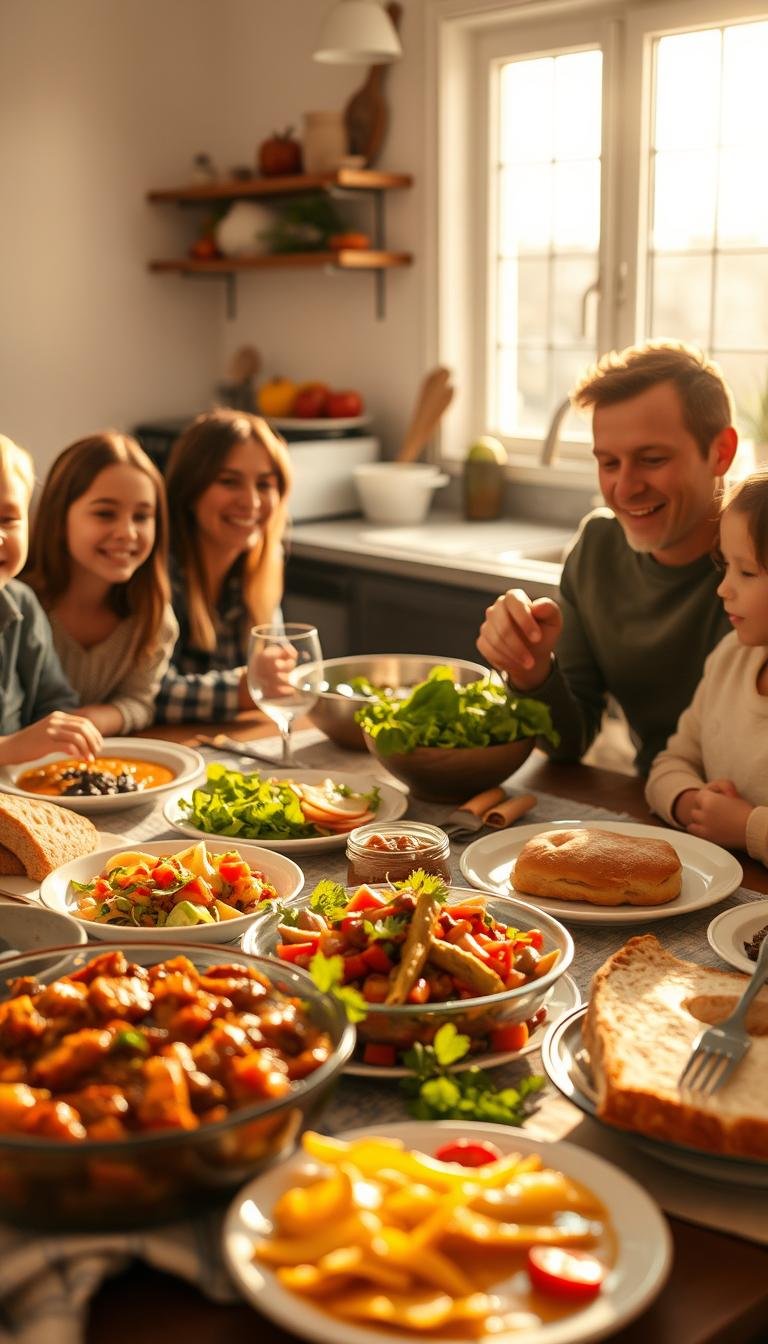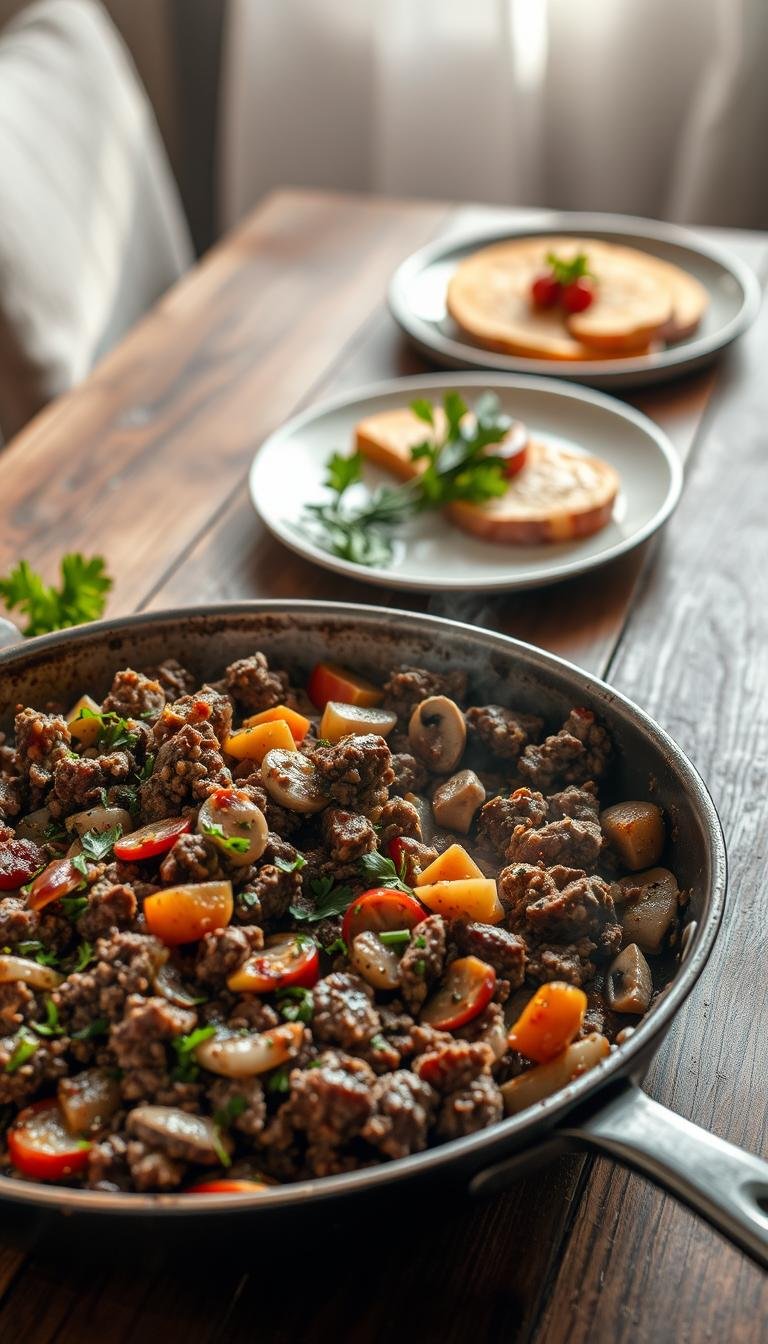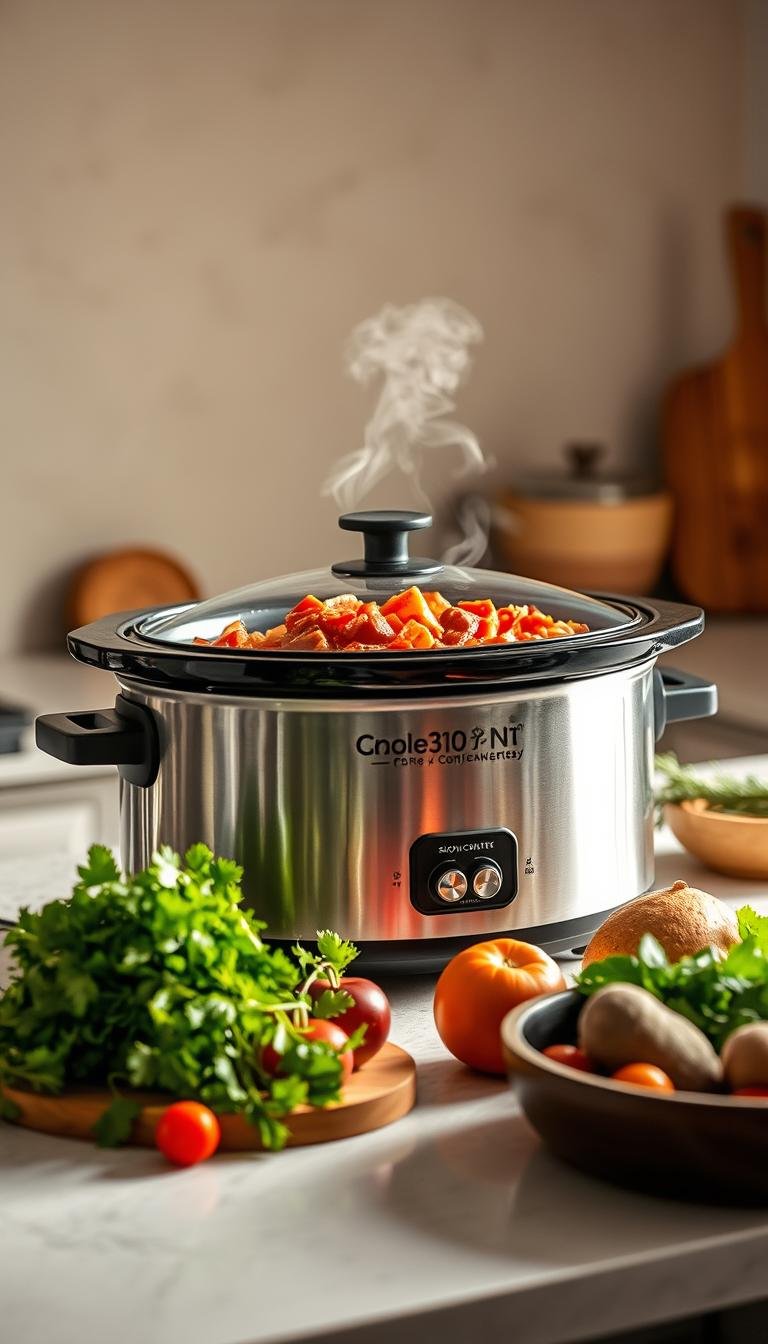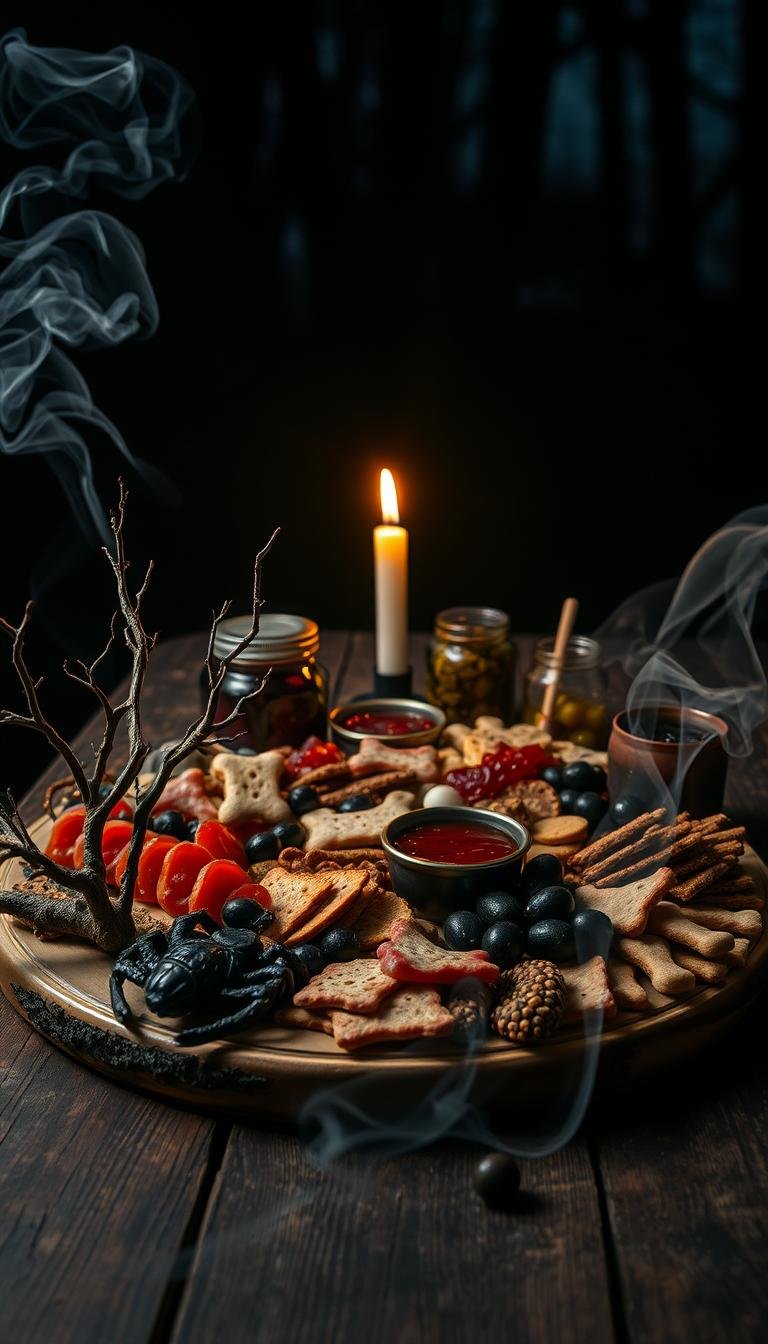Ham Dinner Ideas: Top Recipes for Dinner Tonight
Surprising fact: nearly one in four U.S. households say they turn a holiday roast into a quick weeknight meal the same week it was served.
That reuse saves time and stretches a single purchase into several satisfying plates. This short guide shows fast, reliable methods to move from oven to table tonight.
Choose bone-in for flavor and a useful bone for soup later. Expect 15–20 minutes per pound for most bone-in halves and up to 25 minutes per pound for boneless cuts. For fully cooked portions, reheat to 125°F and keep covered with foil for most of the bake.
Remove foil for the last ~20 minutes to brown and baste with glaze. Let the meat rest about 20 minutes before slicing to lock in juices.
Key Takeaways
- Bone-in offers better flavor and a stock-making bone; boneless saves time.
- Reheat fully cooked meat to 125°F and cover with foil to avoid drying.
- Baste and remove foil for the last 20 minutes for a caramelized finish.
- Plan 15–20 minutes per pound for bone-in; up to 25 for boneless.
- Save the bone for split pea soup or beans to get extra meals from one roast.
Ham dinner ideas for tonight: Easy, flavorful recipes to try now
Simple glazes and one-pan sides speed a weeknight meal without losing charm.
Brown Sugar-Dijon Glazed Baked Ham with Sheet-Pan Green Beans
Whisk brown sugar, Dijon, and apple cider vinegar. Brush on a small portion, cover, then uncover for the last 20 minutes to baste while green beans roast with garlic and flaky salt.
Honey-Orange Spiral Ham with Roasted Sweet Potatoes
Spoon honey, orange zest and juice, cinnamon, and soy between spiral slices. Tent with foil and roast with cubed sweet potatoes tossed in smoked paprika.
Maple-Mustard Bone-In Ham with Skillet Cornbread
Glaze with maple syrup and whole-grain mustard in the final minutes. Serve with hot cast-iron cornbread and salted butter for a sweet-savory finish.
| Recipe | Prep/Finish Time | Best Cut |
|---|---|---|
| Brown Sugar-Dijon & Green Beans | 40–60 min | Spiral-cut half |
| Honey-Orange & Roasted Sweet Potatoes | 45–70 min | Spiral or small roast |
| Maple-Mustard & Skillet Cornbread | 30–50 min | Bone-in |
| Pineapple-Bourbon & Garlic Rice | 25–45 min | Boneless |
Quick stove or Instant Pot options: sear herb-rubbed steaks with apples, pressure-cook split pea soup with the bone, or make a frittata with cheddar and broccoli. Keep an instant-read thermometer handy and reheat fully cooked portions to 125°F for best results.
Cook it right: Timing, temperature, and glazing tips for perfect ham
A reliable reheating plan keeps the center moist and the crust glossy.
Bone-in vs. boneless: Flavor, timing, and when to choose each
Bone-in roasts deliver richer taste and leave a bone for stock, split pea soup, or beans. Expect roughly 15–20 minutes per pound for halves or whole bone-in cuts.
Boneless or spiral-cut is easier to carve and serve but often needs up to 25 minutes per pound because the bone no longer helps conduct heat.
Cover, baste, and rest: Foil use, final browning, and the 125°F target
For fully cooked portions, aim to reheat to an internal temperature of 125°F. Keep the roast covered with foil for most of the time to prevent drying and early browning.
Remove the foil for the last ~20 minutes and baste several times to build a glossy, lacquered crust. High-sugar glazes like brown sugar-mustard or maple-mustard caramelize best in that window.
Always rest the meat 20 minutes before slicing so juices redistribute. Use an instant-read thermometer in the thickest part, away from the bone, for accurate reading.
“Gentle heat and frequent basting turn reheating into a finishing step, not a race.”
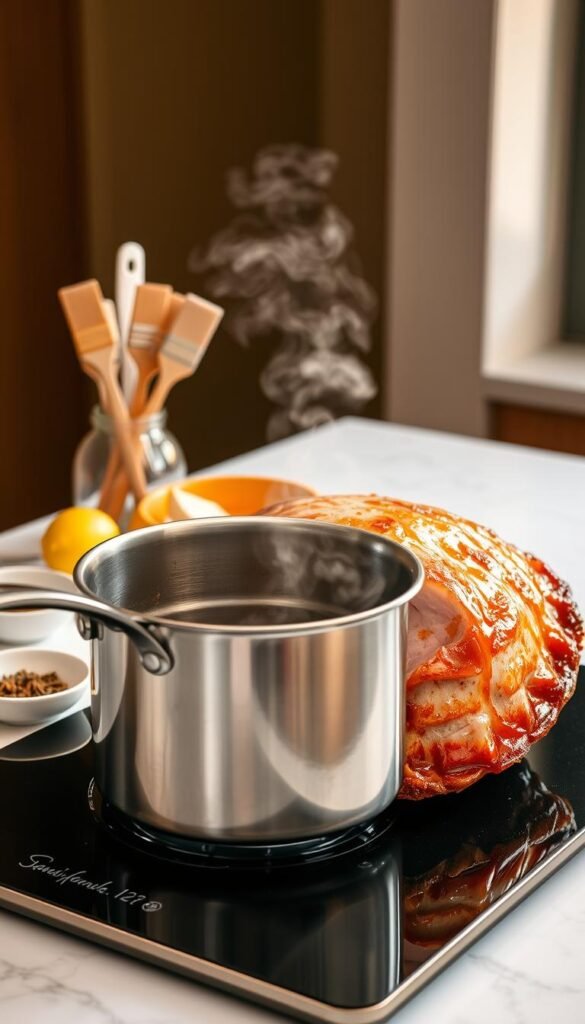
- Discard prepacked seasoning pouches; brush on a fresh glaze you control.
- If the center hits 125°F early, lower oven temp and hold covered until glaze time.
- For small households, roast a shank or butt portion using the same per-pound timing.
| Cut Type | Minutes per Pound | Best Use |
|---|---|---|
| Bone-in half/whole | 15–20 | Richer flavor, bone for stock |
| Boneless / spiral | up to 25 | Easy carving, quicker serving |
| Shank or butt portion | Use same timing per pound | Small households, less waste |
| Fully cooked supermarket cuts | Reheat to 125°F | Preserve moisture and texture |
More dinner-friendly ways to serve ham: Sides, glazes, and leftover upgrades
Bright glazes and simple sides turn a roasted centerpiece into quick weeknight plates.
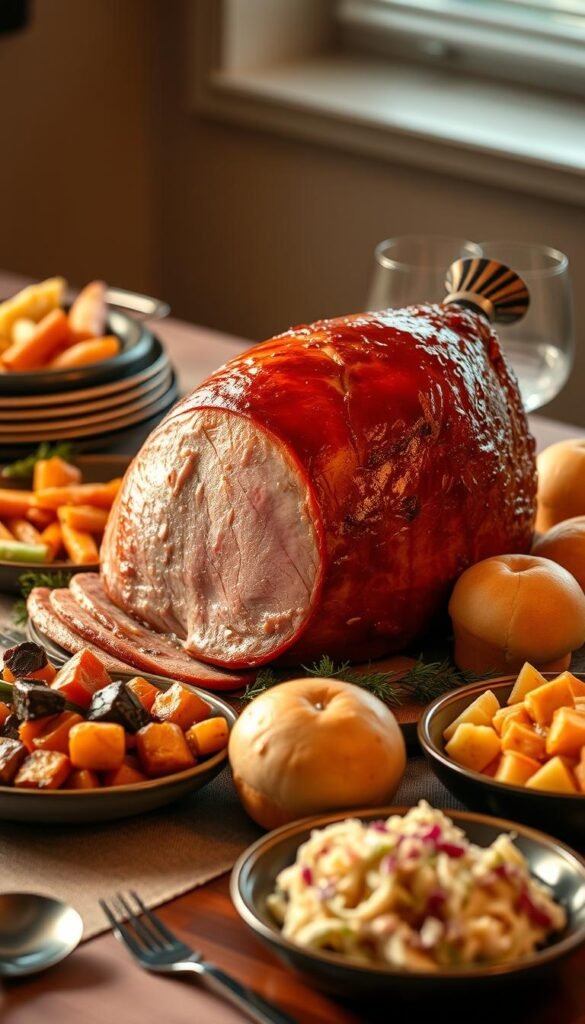
Glaze builder basics: balance a sweet element (maple, brown sugar, honey), a tangy note (Dijon, cider vinegar, orange), and aromatics (garlic, mustard seeds, chili flakes). Brush sauces in the last 20 minutes to set a glossy finish without burning.
Tangy to sweet glazes
Dijon-maple: 1/3 cup maple + 2 tbsp Dijon + 1 tbsp cider vinegar + pepper. Apply late for shine.
Brown sugar-mustard: 1/2 cup brown sugar + 2 tbsp mustard + 1 tbsp soy; whisk with ground mustard if you like extra zip.
Pineapple-chili: simmer crushed pineapple, brown sugar, chili flakes, and lime to thicken before glazing to avoid runoff.
Weeknight sides that pair perfectly
Choose fast, hearty sides: garlicky greens, skillet cornbread, roasted sweet potatoes, buttered noodles, or garlic rice. Beans add protein and stretch meals—try cannellini with lemon or smoky pinto beans with hot sauce.
Leftover transformations & make-ahead tips
Turn slices into fried rice with peas and eggs, a creamy white-bean pot with rosemary, or chopped salads with a mustard vinaigrette.
Glaze and cool slightly if making ahead. Reheat slices covered with a splash of stock or orange juice and aim for a warm 125°F center to avoid drying out.
| Use | Quick Recipe | When to Apply | Why It Works |
|---|---|---|---|
| Dijon-Maple Glaze | Brush during last 20 min | Spiral or sliced roasts | Sweet-tangy balance; glossy finish |
| Brown Sugar-Mustard | Whisk and baste before final browning | Bone-in or boneless halves | Deep caramel and savory kick |
| Pineapple-Chili | Simmer to thicken, then glaze | Summer plates or sweet-savory menus | Bright acidity cuts salt; tropical heat |
| Leftover Uses | Fried rice, bean pot, pressed sandwiches | Next-day meals | Quick, high-value meals from slices |
Conclusion
,Finish the meal confidently by following simple timing and glazing cues that protect moisture and build flavor.
Plan time and temp: aim 15–20 minutes per pound for bone-in and up to 25 for boneless, reheating fully cooked portions to 125°F. Keep the roast covered until the final 20 minutes, then glaze and brown.
Pair sweet glazes with garlicky greens and an easy starch like roasted sweet potatoes or rice for balanced plates. Rest the roast 20 minutes before slicing to lock juices.
Use leftovers in split pea soup, bean pots, fried rice, frittatas, or hearty salads to stretch meals and reduce waste. Choose bone-in for flavor and stock, or boneless for speed, and cook with confidence any night of the week.

